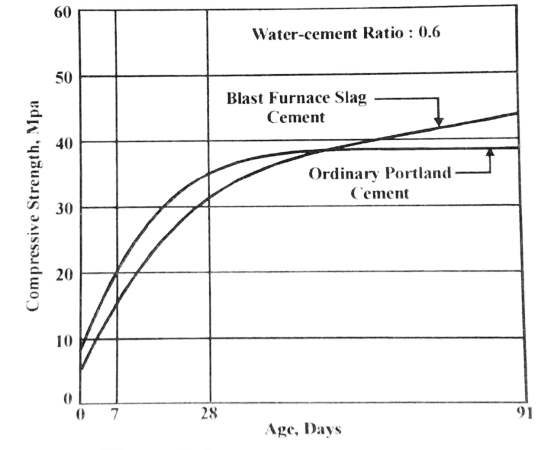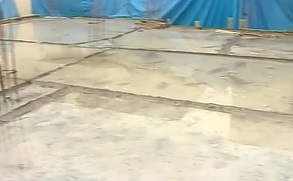Table of Contents
What is Curing of Concrete?
Curing is the process of maintaining the moisture of freshly placed concrete to complete the hydration process and to ensure proper hardening, attaining desirable strength and durability.
Curing keeps the concrete surface moist and reduces shrinkage. Curing should be started at the earliest. It has to be started when the surface is hard enough for a person to walk over it without damage to concrete.
Till such time the surface moisture may be maintained by splashing or spraying water without force. In fact, concrete derives strength from the hydration of cement.
If curing is neglected in the early period of hydration, the quality of concrete will experience a sort of loss. If curing is not done well after placing concrete, it will not give the desirable bond and strength characteristics.
Purpose of Curing
The following are the purposes of the curing of concrete summarized below
- The resistance of concrete to abrasion is considerably raised by proper curing.
- The curing protects the concrete surfaces from sun and wind.
- The presence of water is essential to cause the chemical action that accompanies the setting of concrete.
- Concrete strength moderately increases with age, if curing is efficient.
- The durability and impermeability of concrete are increased and shrinkage is decreased.
Importance of Curing
The curing protects the concrete surface from sun and wind. Curing imparts better strength to the concrete. The durability and impermeability of concrete are increased by proper curing.
For the ordinary portland cement, the curing period is about 7 to 14 days. If curing of concrete is not done properly it will reduce the compressive and flexural strengths.
The frost and weathering resistances are decreased due to improper curing. The cracks are developed due to plastic shrinkage, drying shrinkage and thermal effects if curing is not done properly.
Curing Period
To develop design strength the concrete has to be cured for up to 28 days. As the rate of hydration and hence the rate of development of strength reduced with time. It is not worthwhile to cure for the full period of 28 days.
IS 456:2000 stipulate a minimum of 7 days moist-curing, while IS:7861(Part-1)-1975 stipulates a minimum of 10 days under hot weather conditions.
High-early-strength cement can be cured for half the period suggested for OPC. For Pozzolana or blast-furnace-slag cement, the curing period should be increased.
There are many opinions on the length of the curing period. Periods varying from 13 to 30 days are specified for highway pavements.
There can not be a definite mandate on this matter as there are too many variables involved, such as the type of cement, ambient temperature, nature of the product, method of curing adopted, etc.
Generally increased curing periods are desirable for high-quality concrete products, concrete floors, roads and airfield pavements. The variation of compressive strength with the curing period is given in the figure.

Method of Curing
The most common method of curing are as follows:
- Water Curing
- Membrane Curing
- Application of heat/steam Curing
- Application of Curing Compound
Water Curing
It is the best method of curing. In this method, water is applied to the concrete surface for a certain duration. There are the following ways of water curing.
- Ponding
- Spraying
- Wet Covering
Wet covering slabs, roofs etc. are covered underwater by developing water ponds on the concrete surfaces.

Vertical walls, columns, plastered surfaces are cured by the sprinkling of water on them. Vertical surfaces are also cured by using some wet covering such as gunny bags, cloth, jute matting, straw etc.
Horizontal surfaces are kept wet by covering concrete with wet sand, sawdust etc.
Membrane Curing
In some places where there is an acute shortage of water, membrane curing is adopted. Generally, water mixed for making concrete is more than sufficient to hydrate the cement.

Membranes are applied all around the concrete which will effectively seal off the concrete. The membranes seal over the concrete by means of a firm impervious film to prevent moisture in concrete from escaping by evaporation.
This prevention of moisture in the concrete will work as curing of concrete.
Application of heat/Steam Curing
When concrete is subjected to a higher temperature, with an excess of moisture it accelerates the hydration process and results in the higher development of strength.
The Concrete can’t be subjected to dry heat because of moisture which is also an essential requirement. Thus for achieving this goal concrete is required to subject the steam Curing.
The steam curing will not provide only economic advantages but also technical advantages to the concrete. In general, it is employed on the prefabricated concrete component.
Application of Curing Compound
There are certain curing compounds that keep the concrete wet. Calcium chloride is the one curing compound. It can be used as a surface coating.

Calcium chloride is a salt, it shows an affinity for moisture. The salt not only absorbs the moisture from the atmosphere but also retain it at the surface. Salt keeps the concrete wet for a long time to promote hydration.
The Curing compounds are available on various bases like chlorinated rubbers, sodium silicates, wax, linseed oils, bitumens, acrylates and other items.
Conclusion
These are the complete guide about the curing of concrete. I hope I have covered all the information about the curing of concrete.
If you want to add any information which has been missed in this article, you can mention it in the comment section.
Don’t forget to share.
Thanks! for visiting.
Also, read
Concrete Mix Ratio, Types, Proportioning of Concrete Mix & Methods
Concrete Cover – Clear Cover, Nominal Cover and Effective Cover
Water Cement Ratio – Definition, Importance, Calculation
Pre-stressed Concrete – Definition, Method, Advantages & Disadvantages
Plum Concrete – Purpose, Ratio, Specification & Uses
Compaction Factor Test for Concrete